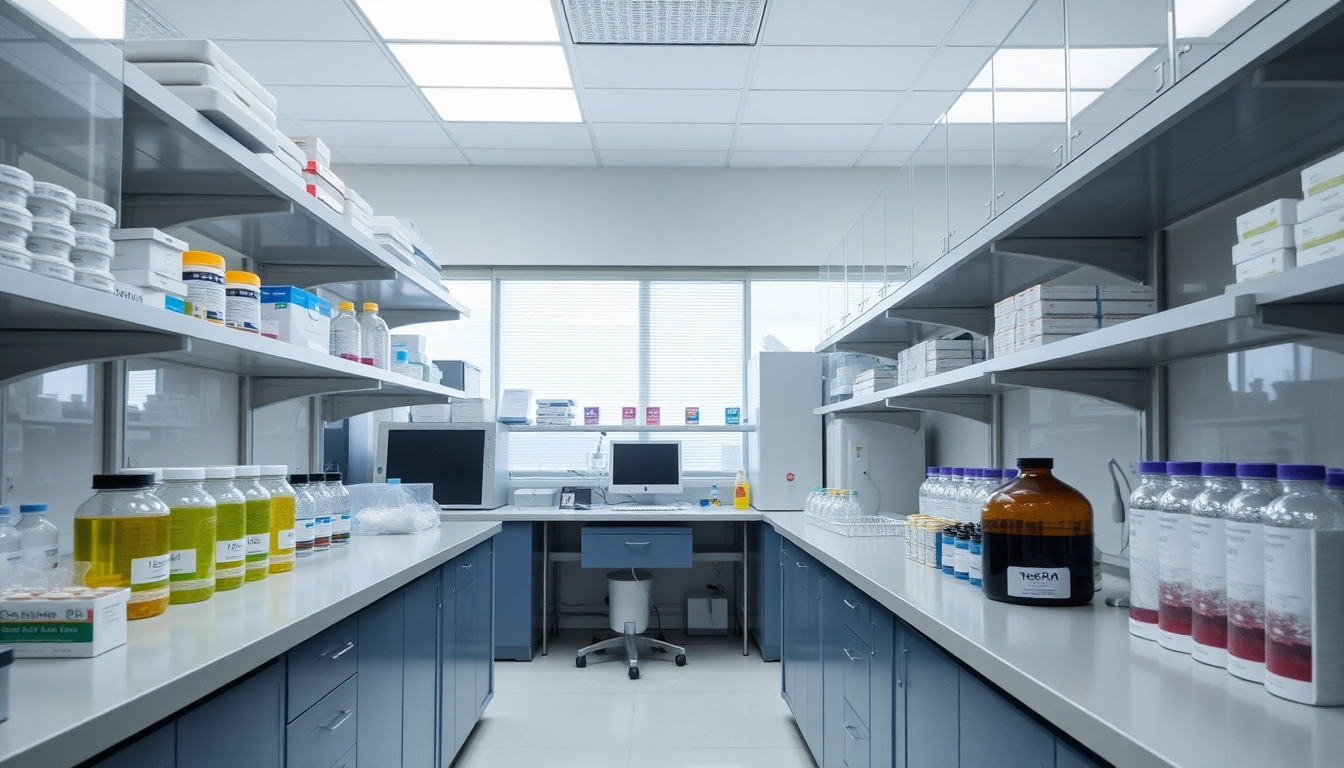
Introduction to TeSR™ Feeder-Free Media
The field of stem cell research has experienced transformative changes over the last decade, particularly with the advent of feeder-free culture systems that allow for the maintenance and differentiation of human pluripotent stem cells (hPSCs) in a highly controlled environment. Among the most significant innovations in this field is the TeSR™ family of feeder-free media, which was designed to provide a consistent and high-quality culture experience for researchers. This article aims to delve into the various aspects of TeSR™ culture media, exploring its features, applications, and the significant role it plays in advancing stem cell research. For further insights, you can check out all check.
What is TeSR™ Culture Media?
TeSR™ culture media is a series of standardized, fully defined media specifically tailored for the culture, maintenance, reprogramming, and differentiation of human embryonic stem (ES) and induced pluripotent stem (iPS) cells. Developed initially by Dr. James Thomson and his colleagues at the University of Wisconsin, the media have been continuously refined and improved over the years, making them the go-to choice for many researchers around the globe.
Importance of Feeder-Free Culture Systems
Feeder-free culture systems are pivotal in the study of stem cells as they eliminate the need for animal-derived components that can introduce variability and contamination risks. This allows for the cultivation of hPSCs in an environment that is not only more ethically sound but also more rigorous in terms of reproducibility. The use of defined media like TeSR™ ensures that researchers can reproduce results reliably across different laboratories and experiments.
Overview of the TeSR™ Product Line
The TeSR™ media family comprises several formulations, each designed for specific applications within stem cell research. Key products include:
- mTeSR™1: The foundational feeder-free medium that supports the maintenance of hPSCs.
- mTeSR™ Plus: An enhanced version providing stable conditions with longer intervals between media changes.
- TeSR™-E8™: A simplified low-protein medium with essential components for hPSC maintenance.
- mFreSR™: A medium specifically developed for the cryopreservation of stem cells.
- ReproTeSR™: A medium designed for the reprogramming of fibroblasts into iPSCs.
Understanding Human Pluripotent Stem Cells (hPSCs)
Characteristics of hPSCs
Human pluripotent stem cells possess unique properties that enable them to differentiate into any cell type in the body. They are characterized by their self-renewal capabilities and their capacity to maintain pluripotency. These features make them invaluable for research, as they have the potential to contribute to regenerative medicine and the understanding of various diseases.
Applications in Regenerative Medicine
hPSCs are central to regenerative medicine, offering the possibility of replacing damaged tissues and organs. They are being researched for their applications in treating neurological disorders, cardiac diseases, and diabetes, among others. The ability to generate specific cell types for transplantation makes hPSCs a powerful tool in addressing previously untreatable conditions.
Challenges in Maintaining hPSC Cultures
Despite their potential, hPSCs are challenging to maintain in culture due to their sensitivity to environmental factors. Variability in growth conditions can lead to significant impacts on cell quality, including loss of pluripotency and genetic stability. The use of TeSR™ media improves the consistency and reliability of hPSC cultures, addressing some of these challenges.
Choosing the Right TeSR™ Media for Your Research
Comparative Analysis of TeSR™ Products
With a variety of TeSR™ products available, selecting the right one for specific research goals requires a clear understanding of each formulation’s characteristics and applications. Here’s a comparative analysis:
- mTeSR™1: A versatile choice for maintaining hPSCs in standard culture conditions.
- mTeSR™ Plus: Ideal for labs seeking to ease maintenance workloads and enhance culture stability.
- TeSR™-E8™: Best for researchers looking for simplicity with optimized results, focusing on essential components.
Key Considerations in Media Selection
When choosing a TeSR™ medium, consider the following factors:
- Type of stem cells being cultured: Ensure the medium is suitable for embryonic or iPS cells.
- Desired differentiation pathway: Some media are optimized for differentiation, while others are for culture maintenance.
- Regulatory compliance: For clinical applications, ensure that the media meet cGMP standards.
Utilizing the Interactive Product Finder
STEMCELL Technologies provides an Interactive Product Finder tool that assists researchers in identifying the most appropriate TeSR™ media for their specific needs. This resource is invaluable for optimizing research design and ensuring that the chosen media align with experimental goals.
Best Practices for hPSC Maintenance and Differentiation
Protocol for Maintaining hPSCs
To ensure the health and viability of hPSC cultures, adherence to established protocols is crucial. General best practices include:
- Regular monitoring of cell morphology and density.
- Timely media changes to prevent nutrient depletion and waste accumulation.
- Utilizing appropriate passaging techniques to maintain pluripotency.
Optimizing Differentiation with TeSR™ Media
For successful differentiation of hPSCs into specific cell types, it is essential to select the appropriate TeSR™ media based on the desired lineage. For example, products such as TeSR™-E5 and TeSR™-E6 are optimized for differentiating hPSCs into endodermal and mesodermal lineages, respectively. Protocol adjustments and additional growth factors may also be required, depending on the target cell type.
Case Studies of Successful Differentiation
Numerous studies have demonstrated the effectiveness of TeSR™ media in differentiating hPSCs into functional cell types. For instance, Dr. Joseph C. Wu’s research successfully utilized TeSR™ formulations to direct the differentiation of hPSCs into hematopoietic cells, contributing to advances in blood-related therapies. Similarly, other researchers, such as Dr. Christine Mummery, have achieved remarkable results in deriving cardiomyocytes, underscoring the versatility and efficacy of TeSR™ media.
Future Directions in Stem Cell Research
Innovations in Feeder-Free Technology
The evolution of feeder-free culture systems will continue to influence stem cell research significantly. Ongoing innovations aim to enhance the efficiency of hPSC maintenance and differentiation, potentially allowing for more streamlined workflows and improved reproducibility. Up-and-coming formulations like TeSR™-AOF reflect this direction by removing any potential contamination from animal products, providing a more standardized environment for researchers.
Regulatory Considerations for Clinical Applications
As the application of hPSCs in clinical settings becomes more prevalent, regulatory guidelines surrounding their use will become increasingly critical. The TeSR™ media are manufactured under cGMP conditions to ensure safety and efficacy, which is vital for clinical applications. Staying abreast of these regulatory landscapes will be essential for researchers involved in developing stem cell-based therapies.
Impact of Research on Therapeutic Strategies
Continued advancements in the understanding and utilization of hPSCs will undoubtedly impact therapeutic strategies across multiple disciplines. Researchers utilizing TeSR™ media contribute to the growing body of knowledge that enhances patient outcomes through personalized medicine. With the potential for targeted cellular therapies, the ongoing exploration of hPSC capabilities will yield new solutions to persistent medical challenges.







